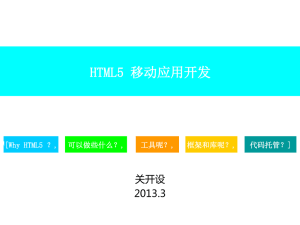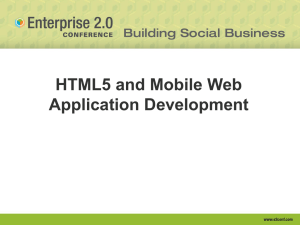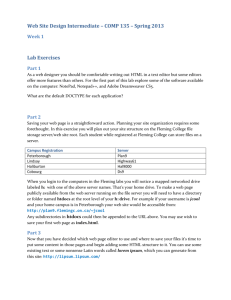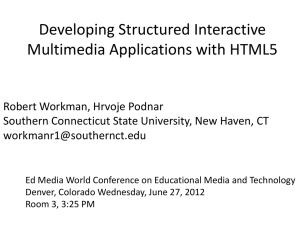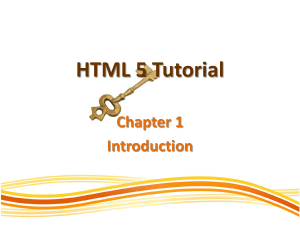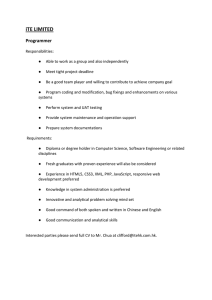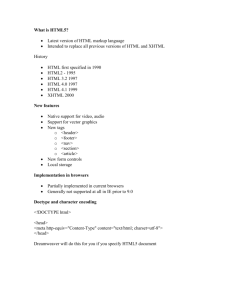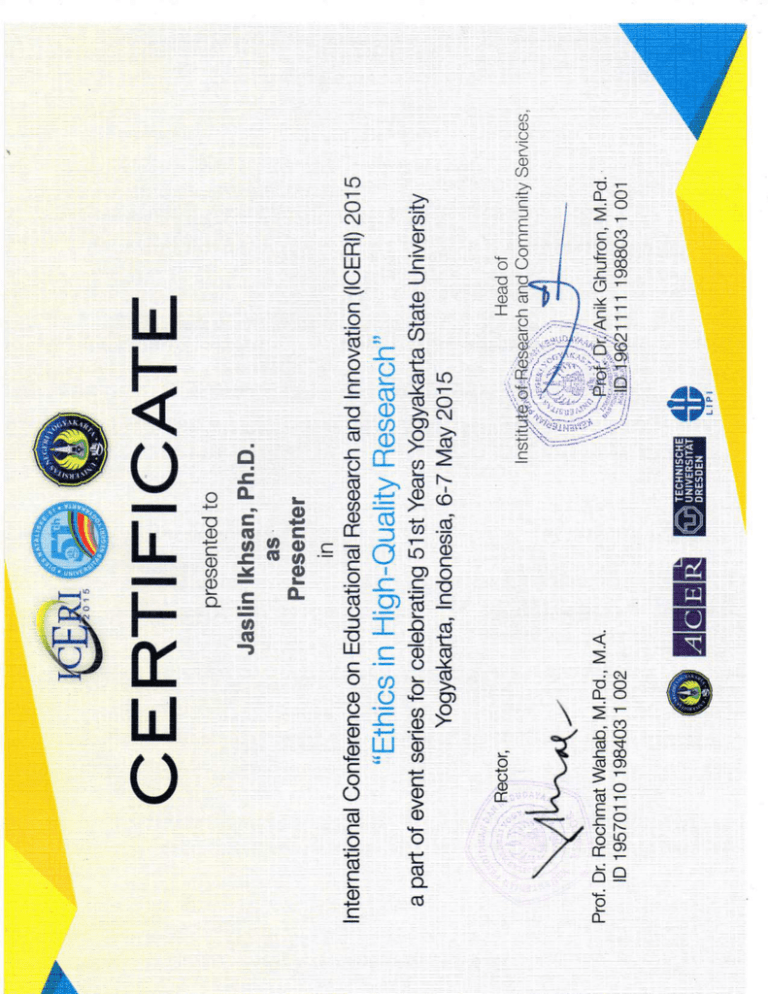
CONFERENCE PROCEEDINGS ETHICS IN HIGH-QUALITY RESEARCH
CONFERENCE
PROCEEDINGS
2015
Institute of Research and Community Services Yogyakarta State University
ISSN : 2443-1753
International Conference on
Educational Research and Innovation
May, 6-7, 2015
ISSN : 2443-1753
International Conference on
Educational Research and Innovation
CONFERENCE
PROCEEDINGS
Institute of Research and Community Services Yogyakarta State University
May, 6-7, 2015
Published by
Institute of Research and Community Services Yogyakarta State University
Kampus Karangmalang, Yogyakarta, Indonesia 55281
Phone : (0274) 550839.
e-mail : lppm@uny.ac.id
ICERI 2015 Proceedings
International Conference on Education, Research and Innovation
May 6th-7th, 2015 — Yogyakarta, Indonesia
Edited by
Prof. Dr. Sri Atun,
Christopher Drake,
Dr. Elizabeth Hatnell-Young,
Dr. Mohamed Bahaaeldin
Prof. Dr. Sudji Mudadi,
Dr. Ing. Satoto Endar Nayoro, S., M.Eng., M.Sc.,
Retna Hidayah, ST., MT, Ph.D.,
Dr. Setya Raharja,
Dr. Widiyanto,
Dr. Arif Rohman,
Apri Nuryanto, MT.
Institute of Research and Community Services
Yogyakarta State University
in Collaboration with
Australian Council for Educational Research (ACER)
Technische Universitat Dresden (TUD)
Indonesian Institute of Sciences (LIPI)
ISSN: 2443-1753
Book cover and layout designed by
Apri Nuryanto
All rights reserved. Copyright © 2015,
The papers published in these proceedings reflect the views only of the authors. The
publisher cannot be held responsible for the validity or use of the information therein
contained. Some conference presentations may not be available for publication.
ii
International Conference on Educational Research and Innovation (ICERI 2015)
iii
International Conference on Educational Research and Innovation (ICERI 2015)
iv
International Conference on Educational Research and Innovation (ICERI 2015)
v
International Conference on Educational Research and Innovation (ICERI 2015)
vi
International Conference on Educational Research and Innovation (ICERI 2015)
vii
International Conference on Educational Research and Innovation (ICERI 2015)
viii
International Conference on Educational Research and Innovation (ICERI 2015)
TABLE OF CONTENT
MESSAGE FROM THE RECTOR OF YOGYAKARTA STATE
UNIVERSITY ............................................................................................................ iii
MESSAGE FROM THE ORGANIZING COMMITTEE.......................................v
FOREWORDS FROM THE HEAD OF COMMITTEE ..................................... vii
DEVELOPING AN UNDERSTANDING OF ETHICS AND
EDUCATIONAL RESEARCH ICERI 2015
Elizabeth Hartnell-Young, PhD................................................................................................ 1
A FRAMEWORK FOR CONDUCTING INNOVATIVE RESEARCH
Bahaaeldin Mohamed ............................................................................................................ 7
WHY PLAGIARIZE: THE THEORY OF PLANNED BEHAVIOR
PERSPECTIVE
Lydia Zechariah Wiyono, Adiarnice Thionobic, Yohanes Budiarto ......................................... 14
MORAL DISENGAGEMENT AND PLAGIARISM AMONG
UNDERGRADUATE STUDENTS
Joyce Natalia, Alvianty Wijaya, Novita Liesera & Bonar Hutapea ......................................... 18
THE IMPACT OF SUPERVISION ON UNDERGRADUATE STUDENTS’
THESIS WRITING
Misdi & Rina Destiana .......................................................................................................... 24
ROLE OF PROCRASTINATION FOR ACADEMIC DISHONESTY
AMONG UNDERGRADUATE STUDENTS
NovitaLiesera, AlviantyWijaya, Joyce Natalia, & Bonar Hutapea ........................................... 28
PLAGIARISM EXPERIENCE AND MORAL EMOTIONS
Yohanes Budiarto ................................................................................................................. 33
IMPROVING STUDENTS’ SELF-DIRECTED LEARNING THROUGH
BLENDED LEARNING: CASE STUDY OF SMKN 7 YOGYAKARTA
Yolandaru Septiana & Annisa Ratna Sari............................................................................... 37
SHOULD I MAKE UP THEIR SCORE OR LET THEM FAIL?
DIFFRACTION OF TEACHERS’ ETHICAL DILEMMA IN INCREASING
THEIR STUDENTS’ GRADE
Adi Suryani, Soedarso, & Zainul Muhibbin ............................................................................ 44
ix
International Conference on Educational Research and Innovation (ICERI 2015)
THE CORRELATION BETWEEN AFFECTIVE CHARACTERS IN
LEARNING PROCESS AND THE LEARNING ACHIEVEMENT OF
SENIOR HIGH SCHOOL STUDENT
Ahmad Dahlan, Muh Syahrul Sarea, & Fikroturrofiah Suwandi Putri..................................... 52
AN ATTITUDE AND CHARACTER LEARNING DEVELOPMENT
BASED ON CURRICULUM 2013 IN SCONDARAY SCHOOL
Badeni & Sri Saparahayuningsih ........................................................................................... 57
IMPLEMENTATION OF MULTIPLE INTELLIGENCES THEORY IN
PHYSICS INSTRUCTION TO IMPROVE THE STUDENTS’ LEARNING
OUTCOMES
Dewi Sartika ......................................................................................................................... 65
CHARACTER IMPLEMENTATION THROUGH FRIDAY TO SHARE IN
STATE VOCATIONAL HIGH SCHOOL I OF MOJOKERTO CITY
(SMKN I MOJOKERTO)
Diah Puji Nali Brata .............................................................................................................. 70
EFFECT OF INTENSIVE INTEGRATION OF ICT-BASED AUDIO AND
VIDEO IN HYBRID LEARNING TO IMPROVE LISTENING SKILL OF
STUDENTS AT SMA N 1 PRAMBANAN
Dian Susetyaningtyas ........................................................................................................... 75
REVEALING THE MORAL VALUES IN NOVEL SANG PEMIMPI AS
FORMING CHARACTER CONSTRUCTION OF CHILDREN AS A
RESULT OF MOTHER LANGUAGE
Dya Ayu Agustiana Putri & Zudha Wahyu Mustafa .............................................................. 81
PROFILE OF CRITICAL THINKING FOR SUPPORTING HABITS OF
MIND AMONG PHYSICS EDUCATION STUDENTS
Eko Susilowati1, Dadi Rusdiana, & Ida Kaniawati .................................................................. 95
REFLECTIVE MENTAL ATTITUDE AND COGNITIVE ABILITY: A
STUDY OF REFLECTIVE THINKING SKILLS IN SOLVING
MATHEMATICAL PHYSICS PROBLEMS
Ellianawati, Rusdiana D, & Sabandar J .................................................................................100
THE ROLE OF PEER TUTOR IN PLANT ANATOMY COURSE FOR
ENHANCING STUDENT QUANTITATIVE LITERACY
Eni Nuraeni, Adi Rahmat, Sri Redjeki & Riandi .....................................................................105
PROJECT BASED LEARNING AS A METHOD OF LEARNING
ENTREPRENEURSHIP ON PRIMARY SCHOOL AGE TO EMBODY
WELL-EDUCATED GENERATION
AuliaAzmi Masna, Yeni Irma Normawati, & Ermawaty Puspitaningrum ...............................111
DEVELOPMENT OF CITEVIR (INTERACTIVE MULTIMEDIA WITH
PUZZLE EDUCATION GAMES AND VIRTUAL LABORATORY) OF
EXCRETORY SYSTEM ON SENIOR HIGH SCHOOL
Heru Setiawan, Wiwi Isnaeni & F. Putut Martin Herry Bodijantoro. .....................................120
x
International Conference on Educational Research and Innovation (ICERI 2015)
THE PROCESS OF STUDENTS’ CHARACTER BUILDING THROUGH
TEACHERS’ SPIRITUAL LEADERSHIP
Ifit Novita Sari .....................................................................................................................129
MEANINGFULNESS OF LEARNING MATHEMATICS IN BUILDING
THE SPIRIT OF ENTREPRENEURSHIP
Lusi Rachmiazasi Masduki & Eem Kurniasih .........................................................................133
THE ROLE OF MADURESE CULTURE IN CHARACTER BUILDING OF
ENGLISH DEPARTMENT STUDENTS AT MADURA UNIVERSITY
Mohammad Amiruddin .......................................................................................................139
THE INVESTIGATION OF STUDENTS’ PERSONALITY AND THEIR
LEARNING STYLE IN AN EFL CLASSROOM
Muhammad Anjar Nugraha & Wawan Setiawan .................................................................144
CHARACTER EDUCATION FOR IMPROVING STUDENTS SKILLS
AND ATTITUDES IN PAPUA HOPE SCHOOL
Noveliza RudyolindyTepy, Lowisye Leatomu, Filia Pangemanan, & Nehtry Merukh .............148
IMPROVING THE PRACTICE OF ISLAMIC RELIGION AND
ACHIEVEMENT THROUGH CONTEXTUAL TEACHING AND
LEARNING (CTL)
Nurhasan Supriyanto ..........................................................................................................152
A RESEARCH EVALUATION: THE LESSON PLAN FOR SCIENTIFIC
APPROACH AND AUTHENTIC ASSESSMENT IN RELIGION AND
CHARACTER EDUCATION
Nurul Mulyaningsih, & Alita Arifiana Anisa ..........................................................................159
LECTURER ETHICAL BEHAVIORS: DESCRIPTION OF SURVEY ON
SEVERAL PRIVATE UNIVERSITIES IN BOGOR, INDONESIA
Rais Hidayat & Yuyun Elizabeth Patras ...............................................................................165
THE IMPLEMENTATION OF MARKET DAY PROGRAM IN
MINIMIZING THE CONSUMPTIVE LIFESTYLE AND DEVELOPING
ENTERPRENEURSHIP OF STUDENTS OF SDIT INTERNASIONAL
LUQMAN AL-HAKIM
Rifki Jati Nur Aulia Sukresna & Rizki Nisa Setyowati.............................................................174
THE APPLICATION OF THE PROJECT BASED LEARNING MODELS
ON THE ATTITUDE TO MATHEMATICS STUDENTS OF THE
FOURTH GRADE OF ELEMENTARY SCHOOL KARANGWUNI 1 IN
THE IMPLEMENTATION OF CURRICULUM 2013
Satrianawati & Anindita Rahardini ......................................................................................180
STUDENTS’ CHARACTER BUILDING THROUGH THE USE OF
REFLECTIVE ACTIVITIES IN VALUE LEARNING IN THE
CONSUMER EDUCATION COURSE
Sri Wening ..........................................................................................................................187
xi
International Conference on Educational Research and Innovation (ICERI 2015)
INTENTION TO PLAGIARIZE: THE ACADEMIC SELF-EFFICACY AS
ANTECEDENT
Vivian Chandra & Yohanes Budiarto ....................................................................................195
INCORPORATING CULTURES IN ENGLISH LEARNING MATERIALS
TO ENHANCE THE INTERNALIZATION AND ACTUALIZATION OF
CULTURE VALUES TOWARD JUNIOR HIGH SCHOOL STUDENTS
Wiwiek Afifah ......................................................................................................................199
“TIGA JAKA” AN INNOVATIVE GAMES TO IMPROVE ACTIVITY
AND OUTCOMES OF LEARNING MATHEMATICS IN
MULTIPLICATION MATERIAL
Abdul Mu’in ........................................................................................................................208
THE PDEODEE STUDENTS WORKSHEET ON STATIC ELECTRICITY:
AS INNOVATION IN LEARNING SETS OF PHYSICS
Achmad Samsudin1, Andi Suhandi2, Dadi Rusdiana3, Ida Kaniawati4 ....................................212
CONTENT VALIDITY OF SELF ASSESSMENT MODEL FOR
HISTORICAL CONSCIOUSNESS
Aisiah ..................................................................................................................................217
EFFORTS TO INCREASE COOPERATION AND ACHIEVEMENT ON
ART OF MUSIC THROUGH COOPERATIVE LEARNING METHOD OF
STUDENT TEAM ACHIEVEMENT DISVISIONS (STAD)
Ajun Suyartono ...................................................................................................................224
MAINTAINING INTEGRITY IN LANGUAGE POWER AND STYLEBASED COMMUNICATION AS SEEN IN MASS MEDIA
COMMUNICATIONS (JOURNALISM) CLASS
Antonius Herujiyanto ..........................................................................................................229
THE EFFECTIVENESS OF PRE-SERVICE TEACHERS TRAINING
MODEL BASED ON PEDAGOGICAL CONTENT KNOWLEDGE AND
COLLABORATIVE LEARNING TO IMPROVE KNOWLEDGE OF
CHEMISTRY CURRICULUM IN VOCATIONAL CONTEXT
Antuni Wiyarsi, Sumar Hendayana, Harry Firman, & Sjaeful Anwar .....................................234
THE ROLE OF HOMEWORK ON LEARNING OUTCOMES OF
MATHEMATICS
Ari Irawan ...........................................................................................................................244
SMART CHEMIST:THE MEDIA FORCHEMISTRY LEARNING ON
ATOMIC STRUCTURE AND PERIODIC SYSTEM OF ELEMENTS
Ari Wahyu Saputro & Jaslin Ikhsan ......................................................................................248
DEVELOPMENT OF FIELD DEPENDENT AND FIELD INDEPENDENT
COGNITIVE STYLE-BASED LEARNING MODEL
Fatimah Azzahra, & Arif Sholahuddin ..................................................................................253
xii
International Conference on Educational Research and Innovation (ICERI 2015)
INTEGRATION OF ICT-BASED MULTIMEDIA INTO HYBRID
MULTIMODAL LEARNING AT SENIOR HIGH SCHOOL TO IMPROVE
STUDENTS’ACHIEVEMENT
Arif Yoga Pratama & Jaslin Ikhsan .......................................................................................260
IMPROVING LOGICAL-MATHEMATICAL INTELLIGENCE
THROUGH COOKING ACTIVITY
Atin Fatimah .......................................................................................................................263
THE USE OF MULTIPLE MODELS INSTRUCTION BASED LEARNING
PROGRAM IN EXPERIMENTAL FUNDAMENTAL PHYSICS COURSE
FOR IMPROVING STUDENTS UNDERSTANDING ABOUT
KINEMATICS CONCEPTS
Subali, B., Rusdiana, D. , Firman, H. , & Kaniawati, I. ............................................................268
PEER PRESSURE AND CONFORMITY AS PREDICTORS OF
ACADEMIC MISCONDUCT AMONG UNIVERSITY STUDENTS
Biuti Lesia & Bonar Hutapea ................................................................................................273
INTEGRATED ASSESSMENT INFORMATION SYSTEM TO SUPPORT
THE APPLICATION OF SCIENTIFIC APPROACH IN THE HIGH
SCHOOL LEVEL
Dadan Rosana & Sukardiyono .............................................................................................278
THE EFFECT OF ASSESSMENT TECHNIQUE AND COOPERATIVE
LEARNING MODEL ON MATHEMATICS COMMUNICATION
ABILITY
Nurhudayah Manjani ..........................................................................................................289
DEVELOPMENT OF ANDROID MOBILE GAME “THE PROFESSOR”
AS CHEMISTRY LEARNING MEDIA IN SENIOR HIGH SCHOOL ON
HYDROCARBON AND PETROLEUM
Paksi Manggala Putra & Jaslin Ikhsan ..................................................................................294
DEVELOPMENT OF 3-DIMENTION ILLUSTRATED TEXTBOOK AS
ENRICHMENT MATERIALS FOR MADRASAH TSANAWIYAH
STUDENTS
Slamet Harjono1, Jaslin Ikhsan2...........................................................................................298
INFLUENCE OF COLLABORATIVE STRATEGIC READING (CSR) IN
TEACHING READING COMPREHENSION
Sopian Saori ........................................................................................................................305
IMPROVING THE SPEAKING TEACHING-LEARNING PROCESS
THROUGH INFORMATION GAP ACTIVITIES
Sri Rejeki, ............................................................................................................................311
THE INFLUENCE OF DISCOVERY LEARNING AND PROJECT BASE
LEARNING ON STUDENTS ACHIEVEMENT ON PHYSIC
Subarino .............................................................................................................................321
xiii
International Conference on Educational Research and Innovation (ICERI 2015)
INTEGRATED DEVELOPMENT ASSESSMENT OF SCIENCE
INSTRUCTION AS AN ALTERNATIVE TO MEASURE THE
ACHIEVEMENT OF CORE COMPETENCE AND COMPETENCE BASIC
ASPECTS OF COGNITIVE PROCESSES AND SKILLS
Sukardiyono & Dadan Rosana .............................................................................................326
APPLYING LOCAL WISDOM- BASED SCIENTIFIC APPROACH IN
CHEMISTRY LEARNING AT GRADE TEN OF SMAN 1 PURWOREJO
TO IMPROVE STUDENTS ACHIEVEMENTS
Sulistiana Febriawati & Jaslin Ikhsan ...................................................................................332
DEVELOPING INTEGRATED ENGLISH LEARNING MATERIAL AND
GAYONESE’S LOCAL WISDOM FOR STUDENTS OF STAIN GAJAH
PUTIH, TAKENGON
Sungkawati Kardi Wahyuningsih .........................................................................................340
THE ESTIMATION OF STANDARD ERROR MEASUREMENT OF
PHYSICS FINAL EXAMINATION IN SMAN 1 SAPE KABUPATEN BIMA
Syahrul Ramadhan & Sri Wahyuni .......................................................................................346
THE DEVELOPMENT OF MODULE OF EARTH AND SPACE
SCIENCES FOR CHARACTER BUILDING INTEGRATED IN ALQUR’AN IN PHYSICS DEPARTMENT OF FACULTY OF TEACHER
TRAINING AND EDUCATION, LAMBUNG MANGKURAT
UNIVERSITY
Syubhan Annur ...................................................................................................................351
EFFORTS TO IMPROVE ACHIEVEMENT AND ABILITY TO
COMMUNICATE ORALY THE LANGUAGE OF JAVA THROUGH
COOPERATIVE LEARNING METHOD TYPE TEAM GAMES
TOURNAMENT (TGT)
Umi Suyamti .......................................................................................................................357
DEVELOPMENT OF AN INSTRUMENT OF PEDAGOGY CREATIVITY
Wasidi, Djemari Mardapi, & Badrun Kartowagiran .............................................................363
THE ROLES OF ANALOGY AND REPRESENTATION IN IMPROVING
CONCEPT UNDERSTANDING ON ELECTRICITY AND MAGNETISM
I Wayan Distrik, Budi Jatmiko, & Z.A. Imam Supardi ...........................................................370
GETHUK CERIA AND PROJECT BASED LEARNING IN TEACHING
GEOMETRY GRADE FIVE
Yohana Setiawan.................................................................................................................377
CONFIRMATORY FACTOR ANALYSIS OF CRITICAL THINKING
DISPOSITION IN TEACHING MATHEMATICS IN JUNIOR HIGH
SCHOOL
R. Rosnawati, Badrun Kartowagiran, & Jailani....................................................................383
xiv
International Conference on Educational Research and Innovation (ICERI 2015)
DEVELOPMENT OF AN EXPERIMENTAL SCIENCE MODULE TO
IMPROVE MIDDLE SCHOOL STUDENTS’ INTEGRATED SCIENCE
PROCESS SKILLS
Jose Paulo C. dela Cruz ........................................................................................................389
GAYONESE LITERATURE EDUCATIONAL POLICY IN THE
CURRICULUM OF ELEMENTARY, JUNIOR, AND SENIOR HIGH
SCHOOL IN TAKENGON
Andika Hariyanto Surbakti ...................................................................................................394
CULTURE-BASED EDUCATION REFORM
Asri Widiatsih, Hendyat Soetopo, Nurul Ulfatin, & Imron Arifin ...........................................398
TEACHER PROFESSION THE DEVELOPMENT THROUGH
OPTIMIZATION OF CLUSTER SCHOOLS IN PRIMARY SCHOOLS
DIFFICULT TO REACH
Dhina Luvitasari ..................................................................................................................403
EFL TEACHERS’ PERSPECTIVE ON PROFESSIONAL
DEVELOPMENT IN IMPROVING TEACHERS’ TEACHING SKILL
Diah Safithri Armin & Rahma Sakina ....................................................................................411
MATHEMATICAL COMMUNICATION IN INTERACTIVE LEARNING
Edi Prayitno .........................................................................................................................417
ASSISTANCE PROGRAM FOR DEAF STUDENTS IN CENTER FOR
DISABILITY SERVICES (PUSAT LAYANAN DIFABEL) UIN SUNAN
KALIJAGA YOGYAKARTA
Jamil Suprihatiningrum, Arif Maftuhin, & Andayani.............................................................423
IMPLEMENTATION GENDER MAINSTREAMING MODEL IN
EDUCATION POLICY ANALYSIS .....................................................................431
L. Andriani P.1, & Mami Hajaroh2 .........................................................................................431
STUDY OF RATIO JUNIOR HIGH SCHOOL’S SCIENCE TEACHER AT
HULU SUNGAI SELATAN REGENCY AND THEIR SKILLS IN CLASS
MANAGEMENT
Rahmawati Shaumi, Mustika Wati, Sri Hartini & Chairil Faif Pasani .....................................438
THE EFFECT OF THE PRIOR KNOWLEDGE TO THE STUDENTS
LEARNING PROCESS AND OUTCOMES ON COURSE THE BASIC
FINANCIAL ACCOUNTING I
Seto Sulaksono Adi Wibowo, & Yosi Handayani ..................................................................440
FACTORS AFFECTING THE SUCCESS OF THE PROFESSIONAL
TEACHER TRAINING
Slameto...............................................................................................................................445
xv
International Conference on Educational Research and Innovation (ICERI 2015)
INTERNAL CONTROL SYSTEM OF SCHOOL (ICSS) BASED ON C2PF
(CURRICULUM, CHARACTER, PERFORMANCE, AND FINANCIAL)
TO IMPROVE QUALITY OF EDUCATIONAL INSTITUTIONS
Surya Jatmika & Rizki Nor Amelia .......................................................................................452
I DIDN’T LIKE IT… BUT I HAD NO CHOICE
Basikin ................................................................................................................................458
DEVELOPMENT OF RESEARCHER'S COMPETENCY IN HIGHER
EDUCATION: A CASE STUDY IN BANDUNG STATE POLYTECHNIC
IN INDONESIA
Carolina Lasambouw, Ediana Sutji redjeki & Neneng Nuryati ..............................................465
THE DIFFICULTIES ENCOUNTERED BY NON-ENGLISH
DEPARTMENT STUDENTS IN SPEAKING ENGLISH
(A Case Study in a College of Nursing in Bandung)
Deastika Bayuning Sudjasmara & Rezki Firdaus ..................................................................472
AN INVESTIGATION OF LISTENING DIFFICULTIES ENCOUNTERED
BY STUDENTS IN LISTENING FOR GENERAL COMMUNICATION
COURSE
Dini Utami Mulyaningsih & Amelia Estrelita ........................................................................478
"AHA" TEACHING : PATTERN RECOGNITION AND OBSERVATION
TRAINING THROUGH KIDS PLAYING IN THE RISK DETECTION "
SPEECH DELAY " FOR EARLY CHILDHOOD TEACHERS
Ika Febrian Kristiana, Costrie Ganes Widayanti , & Sri Hartati .............................................486
THE USE OF VIDEO IN TEACHING SPEAKING
Iman Hilmansyah ................................................................................................................494
IMPROVING ACHIEVEMENT AND LEARNING MOTIVATION IN
SUBJECT PPKN (CIVICS) THROUGH GROUP INVESTIGATION
TEACHING MODEL
Ismiyati ...............................................................................................................................497
DELIVERING SCIENCE-ENGINEERING VIRTUAL LABS USING THE
NEW WEB TECHNOLOGIES (HTML5)
Jaslin Ikhsan & Hafid Setyo Hadi ..........................................................................................507
QUESTIONING THE POSITIVISTIC HEGEMONY IN SOCIAL AND
HUMANITY SCIENCES
Kasiyan & Siti Sudartini .......................................................................................................514
MULTICULTURAL EDUCATION IN A PLURALISTIC SOCIETY IN
INDONESIA
Dr. B.A. Rukiyanto, SJ ..........................................................................................................520
xvi
International Conference on Educational Research and Innovation (ICERI 2015)
THE IMPLEMENTATION OF BLENDED LEARNING AS A
INTRUCTIONAL STRATEGY TO LEARNING OF CNC
PROGRAMMING
Bambang Setiyo Hari Purwoko ............................................................................................525
INNOVATION IN THE IMPLEMENTATION OF HIGHER EDUCATION
Siti Komsiah, Eli Jamilah Mihardja, & Dian Harmaningsih ....................................................532
A REFLECTION FROM ENGLISH AS A FOREIGN LANGUAGE (EFL)
CLASSROOM OBSERVATION RESEARCH
Estu Widodo .......................................................................................................................535
THE EFECTIVENESS OF FLEXIBLE HOMEWORK COMPARE WITH
COMMON HOMEWORK MODELS ABOUT GLB AND GLBB IN
SENIOR HIGH SCHOOL
Holil Septa, Ratna Dwi Astuti, & Riefki Handayani..............................................................539
PILOTING A MODEL OF EDUCATIVE AND ATTRACTIVE PHYSICAL
ACTIVITIES BASED ON CHILDREN’S DOLANAN TO OPTIMIZE
KINDERGARTENERS’ GROWTH AND DEVELOPMENT
Wawan S. Suherman, Soni Nopembri, & Nur Rohmah Muktiani ..........................................542
BUILDING SINERGYCAL COLLABORATION AMONG MINISTRY OF
EDUCATION, DIRECTORATE GENERAL OF POPULATION, AND
MINISTRY OF HEALTH FOR MARGYNAL COMMUNITY THROUGH
“OPEN EDUCATION” MODEL
Margaretha Sri Sukarti ........................................................................................................548
CAN DIALOGIC READING ENHANCE EARLY LITERACY OF
INDONESIAN PRESCHOOLERS?
Tri Puji Astuti & Endang Ekowarni .....................................................................................552
xvii
International Conference on Educational Research and Innovation (ICERI 2015)
DELIVERING SCIENCE-ENGINEERING VIRTUAL LABS USING
THE NEW WEB TECHNOLOGIES (HTML5)
Jaslin Ikhsan1; Hafid Setyo Hadi2
1 Department of Chemistry Education, Faculty of Mathematics and Natural Sciences, Yogyakarta State
University, Karangmalang, Yogyakarta, Indonesia;
2 State Polytechnic of Creative Media Jakarta, Jalan Srengseng Sawah, Jagakarsa, Jakarta, Indonesia.
1
jikhsan@uny.ac.id, 2hafid.setyo@gmail.com
Abstract
This study was a literature review on delevering laboratory experiments through website using HTML5.
The website is new web technologies and standards, called HTML5. HTML5 is the newest version of Hyper
Text Markup Language (HTML), requiring few requirements for visualization technologies.The
technology can enhance effective e-learning media. By using HTML5, internet developes gadually a textbased technology to an object-oriented user interface with dynamic dimension graphics, and all the chances
of user interaction. Web visualization can give the significant improvement for virtual laboratories,
especially for science and engineering classroom. Visualizations of virtual labs are displayed on the web in
the form of plot using HTML5 canvas tag. The plot can be refreshed dynamically. The point of this study
is to develop a graphically-interactive simulation application to calculate any issues of natural phenomenon
in science-engineering classroom. Therefore, the numerical simulation, user interaction and visualization
is consistently executed on the basis of latest web technologies. Finally, the closures of this study are
recommendations for the next model of vitual labs and dissemination of the great attributes of HTML5 to
build real interactive and dynamic e-learning web application.
Keywords: e-learning, visualization, simulation, HTML5, virtual lab.
as the journey, with increased knowledge,
understanding and skills as the destination. In
other words, we use ICT to participate in various
electronic learning activities.
E-learning delivered using synchronous or
asynchronous ways in several categories. Elearning is using internet for communicating and
locating content, within the context of sound
pedagogy [1], toaccess e-resources for classroom
instruction; to participate in online courses; to
provide blended learning by combining online
content with other teaching methods; and to offer
support for communities of practice to share
ideas and experiences. E-resources serve
collections of learning resources or materials for
the members both using Internet or local
networks, like Khan Academy [4], DVB-S based
delivery
system,
the
comprehensive
encyclopedia Wikipedia [5], dictionaries [6] and
thesauri [7], e-books collection of Project
Gutenberg [8], and many e-libraries. Online
course delivered class through the web using
many systems like learning management system
(LMS), learning content management system
(LCMS), and social learning network (SLN).
There are many examples of LMS like Moodle
1. Introduction
Information
and
communication
technology (ICT) has supported education over
the past few years. The term ICT [1]embraces
many technologies that enable us to receive
information, and to communicate or to exchange
information with others. These many
technologies (both devices and functions) are
capturing, interpreting, storing, and transmitting
information.On the other hand, according to
Clark and Mayer [2], current learning and
training which use the technology continues to
increase, while those using conventional or
traditional way (face-to-face class) decreases.
Still in Clark and Mayer [2], Bernard et al.
[3]also compared learning results of electronic
open/distance
learning and
face-to-face
learningshowed has no significant difference.
Electronic learningor e-learning [1] is
appropriate for education because it combines as
its name between e- (electronic) and learning,
and thus puts an emphasis on learning in a way
that the term ICT by itself does not. Where ICT
provide the vehicle, e-learning can be described
507
International Conference on Educational Research and Innovation (ICERI 2015)
[9], Dokeos [10], or A-Tutor [11]. The examples
of LCMS are Claroline[12] or e-doceo solutions
[13]. The examples of SLN are Edmodo [14] and
Quipper School [15].
In the blended learning teacher may use the
power of web technologies in the course. The
tools were provided by web technologiessince
the wave of Web 1.0 until Web 2.0. Web 1.0 only
serve one-way communication in the static web
page. Web 2.0 allow users to create and share
information on the web and to collaborate with
others interactively using many applications
include blogs, wikis, video-sharing, podcasting
and social networking [1]. A framework of
instructional design proposed by Zheng[16] in
designing and developing the Web 2.0-based
learning by (a) learner-centered approach, (b)
interactive social communication, and (c)
dynamic learning in the Web 2.0 applications. In
the wave of Web 3.0 [17], applications use
semantic technologies augment the underlying
Web system's functionalities.
With the support of new web technologies,
in addition to presenting the online repositories
and/or classes, technology also makes it possible
to present a virtual lab class. Virtual lab (or called
as Virtulab) is a type of blended learning
implementation. Virtulab can be interesting and
attractive for students. Virtulab expected to
reduce cost of infrastructure, lab. glasswares, lab.
tools, and materials in the real laboratory
class.As an e-learning application, Virtulab is a
form of utilization of specific tools used in
practice class or laboratory class such as
visualization or simulations. Specialized
software including drawing and designing,
modelling and simulation, adventure games,
expert systems, semantic networking and other
interactive learning tools, as well as learning
management systems, are often employed to
support pedagogical innovation [1]. Virtulab also
expected to be complementary other media elearning
and
provide
multi-modal
instruction.Virtulab is very effective media for
learning of science-technology, not only because
of economic benefit but also of pedagogical
benefit, such as providing scientific learning
approaches, improving student’s learning
independence, flexibility, and motivation.
communicate a message; visualization through
visual imagery has been an effective way to
communicate both abstract and concrete ideas
[18].Lateef [19]defined that simulationis a
technique for practice and learning that can be
applied to many different disciplines and types of
trainees; is a technique (not a technology) to
replace and amplify real experiences with guided
ones, often “immersive” in nature, that evoke or
replicate substantial aspects of the real world in
a fully interactive fashion; andthe “immersive”
here implies that participants are immersed in a
task or setting as if it were the real world.
Visualization and simulation (visim) is
considered to have a good role in learning.
Visimis generally completed with a game.The
game, other than as an effective tool for teaching
because it contains the principles of learning[20].
The game can also motivate learning and
involves students to make learning process more
enjoyable [21].Strangman& Hall [22]stated the
gamecouldbe an effective approach to improve
students learning.Therefore, Randel[23] reported
that the gamewas alsovery beneficial for the
development of media oflearning materials
related to science and language skills.Pivec[24]
found that the visim with the game was
successfully applied to formal education,
especially in the military, medicine, science, and
training.
Visimthat was built as asoftwareapplication
can be run in the form of both, desktop-based or
web-based visualization and simulation
applications. Many kinds of visimhas been used
by students or classes, for examples, in
assessment of human patient [25],nurse
education [26], physics learning games [27], or
for computational problem solving [28].
The Power of HTML5
Web is currently in transition phase to adopt
the upcoming HTML5 standard. The web
applications are currently supported by the latest
technology from the World Wide Web
Consortium (W3C), namely HTML5. W3C
[29]is an international community that develops
open standards to ensure long-term growth of the
Web. HTML5 is the new version of HTML
(Hyper-Text Markup Language). This standard
will replace many of technologies and methods
of current web by offering functionality that is
currently applied by many ad-hoc solutions.
HTML has been in continuous evolution
since it was introduced to Internet in the early
1990s, then HTML4 became a W3C
recommendation in 1997. The HTML
specification reflects an effort, started in 2004, to
2. Discussion
Visualization and Simulation in ELearning
Virtulab presented in visualization and/or
simulation forms. Visualization is any technique
for creating images, diagrams, or animations to
508
International Conference on Educational Research and Innovation (ICERI 2015)
study contemporary HTML implementations and
web content. The specification (1) defines a
single language called HTML which can be
written in HTML syntax and in XML syntax; (2)
defines detailed processing models to foster
interoperable implementations; (3) improves
markup for documents; and (4) introduces
markup and APIs for emerging idioms, such as
web applications [30].
The HTML5 standard adds many new
application program interfaces (APIs), such as
location-based
services,
cross-document
messaging and local storage; and features
allowing developers to create web applications
responding to today’s needs [31].HTML has
introduced many new APIs and have extended
and changed some existing APIs.HTML
introduces a number of APIs that help in creating
web applications. These can be used together
with new elements introduced for applications.
For instance, (1) media elements (video and
audio) have APIs for controlling playback,
synchronizing multiple media elements, and
timed text tracks; (2) an API for forming
constraint validation; (3) an API for commands
that user can invoke; (4) an API that enables
offline web applications, with an application
cache. (4) an API that allows a web application
to register itself for certain protocols or media
types; (5) editing API in combination with a new
global content-editable attribute; (6) drag & drop
API in combination with a draggable attribute;
(7) an API that exposes the components of the
document's URL and allows scripts to navigate,
redirect and reload (the Location interface); (8)
an API that exposes the session history and
allows scripts to update the document's URL
without actually navigating; (9) an API for
“base64” [32] conversion; (10) an API to
schedule timer-based callbacks; (11) an API to
prompt the user; (12) an API for printing the
document; (13) an API for handling search
providers; and (14) the Window object has been
defined [33].
(2) CSS or cascading style sheet [36],a visual and
aural layouts, for a variety of devices. Along with
graphics and scripting, HTML and CSS are the
basis of building web pages and web
applications; (3) JavaScript [37],a most popular
programming language of HTML and the web
that can change content, attributes, styles (CSS)
of HTML, and can validate data; (4) the HTML5
canvas element [38], which is used to draw
graphics on a web page; and (5) HTML controls
and link elements [39], to provide keyboard
operation
and
assistive
technology
interoperability of interactive user interface
elements.
Preliminary Section
The first section in creating HTML5-based
simulation arefinding requirements or problems
to be solved and choosingthe topic of the
problems to be presented in simulation. Steps of
this section are creating working folder; getting
text editor; testingby typing some text contents;
addingmarkup; changing the styles; adding a
link; and adding the images.
The first step on application development is
a space on hard drive, which is required to put
working files and folders to be saved. Then, the
necessary text-editing application in which the
script or code can be written. Text (source)
editors [40] intended for use with HTML usually
provide syntax highlighting. Templates, toolbars
and keyboard shortcuts may quickly insert
common HTML elements and structures.
Wizards, tooltip prompts and autocompletion
may help with common tasks. There are some
favorite text editors for programmer. Notepad++
[41] for Windows operating system (OS)or
TextWrangler [42]for the Mac OS or Komodo
Edit [43] for Linux-based OS is a good choice.
Both are free and easy to use by downloading and
install it on the computer.This section has created
a web page with headings, paragraphs, links, and
images, and apply some styling to change the
default font, color, and layout.
Second Section
This section includes the following steps on
building simulation pages with animated
graphics.The steps are (1) adding a place to draw
using the HTML5 canvas element; (2) drawing
objects in place using JavaScript that can
manipulate all objects; (3) Putting the objects in
motion by using methods such as: erasing and
redrawing the object, changing the values of X
and Y position, and approaching a higher-level
called retained-mode graphics; (4) puttingthe
object and its movement in a mathematical
equation; and (5) debugging JavaScript from
Application Development Sections on
Preparing Virtual Lab with HTML5
Basically, the application was made by
following three standard stages of software
development life cycle (SDLC), such as
development,
testing,
and
production
[34].Instructors or lecturers or teachers and
anyone have possibility to buildsimulation
application in web pages with graphics using
web programming. Creating a web-based
simulation requires basic knowledge of (1)
HTMLto provide the structure of the page [35];
509
International Conference on Educational Research and Innovation (ICERI 2015)
errors, such as typographical or other errors. In
computing, retained-mode (graphics) rendering
is a style for application programming interfaces
of graphics libraries, in which the libraries retain
a complete model of the objects to be rendered
[44].By using competency in JavaScript
programming language, HTML5 canvas
element,
and
algorithms
to
integrate
mathematical equation can predict the movement
of objects in the simulation.
used for web geographical information system
(GIS) in practice Cartagen[50]. It is an opensource, vector-based, client-side framework for
rendering
plug-in-free,
offline-capable,
interactive maps in native HTML5 on a wide
range of web browsers and mobile phones, which
was developed at MIT Media Lab's Design
Ecology group. In biology, the HTML5 was used
for an HTML5 Canvas-based graphics library for
visualizing genomic data [51], and web-based
interactive visualization in a Grid-enabled
neuroimaging application[52].
Third Section
The third section is to provide the user
interface. The interface provides the user to
control
simulation
page.
Developeror
programmer can make a start button, add a slider,
and add a numerical readout for the slider. The
interface contains Syntaxs [45] not only for
buttons and sliders, but also for checkboxes,
drop-down menus, and mouse directly (or touch)
on canvas.
The Use of HTML5 for Virtual Labs in
Science-Technology Learning
The Archimedes law is an the example of
the simulation which was developed by HTML5
in this paper. The law stated that any object or
body that wee completely or partially submerged
into a fluid(liquid), the object would get the force
which is equal to the weight of the fluid displaced
by the object.
The formula of the Archimedes law is
given by Fa = V x g x ρ, where:
Fa : buoyant force
V : the volum of water displaced by object
ρ : spesific mass of water
Authors developed a simulation of an egg
as the object which is submerged into the fluid.
The egg on the Fig. 1 floats because the spesific
mass of the egg was smaller than that of fluid.
Finishing Section
The finishing touch section is all about
improvement and enrichment. Each of the
following improvements can be made
independently. Adding a “trails” for this
simulation is one of improvement. Canvas can
accumulate the amount of unlimited trails, with
thousands of single-dots. It is one of the
advantages of immediate-mode graphics
[46]than retained-mode graphics.Other ways to
enrich the simulation that can be delivered
through: three-dimensions (3-D) shading by
filling the object with a radial gradient; drawing
bigger button by choosing the optimum size;
styling the slider; fixed-width speed readout;
special characters by inserting extra spaces to
separate different elements logically; and more
tweaks for mobile devices.
Succesful Project
There are some examples of visualization
and simulation development project which was
successful enough. In addition to education,
visualization projects were also implemented,
among others, in the fields of construction;
health, geography, biology. In construction,
exploring new web technologies (HTML5) was
used for engineering applications using the
example of an interactive sheet piling wall
simulation [47]. In health, the HTML5 was
developed for sensor based real-time remote
patient monitoring system [48], and a HTML5
powered web electrocardiogram (ECG)
management
system
for
telecardiology
applications [49]. In geography,HTML5 was
Fig. 1. Floating egg when𝜌 egg <𝜌 fluid
Addition of liquid little by little by
pressing “play button” results in the increase of
volume or mass of the egg submerged in the
fluid. However, the addition of the liquid brings
about the decrease of spesific mass of the fluid.
At the time at which the mass of the egg is equal
to the spesific mass of the fluid, the egg float in
the fluid (Fig. 2).
510
International Conference on Educational Research and Innovation (ICERI 2015)
and stimulate lab works through websites as
enrichment lab activities that has yet to be
facilitated. It does not mean to replace lab
activities because learning Science and
Technology is integration of lab works and
theory in a classroom. The virtual labs should be
useful because it is repeatable, flexible in use and
widely accessed.
REFERENCES
Fig. 2. Floatimg egg in when 𝜌 egg =
𝜌fluid
[1] Anderson, J. (2010).ICT Transforming Education
ARegional Guide (C. Wing, Ed.). Bangkok:
UNESCO Bangkok - Asia and Pacific Regional
Bureau for Education, pp. 1-80.
If the addition of the liquid is continued,
then the egg sinks becausemass of the egg is
greater than the spesific mass of the fluid (Fig.
3).
[2] Clark, R.C. and Mayer R.E. (2008). E-learning
and the Science of Instruction 2nd Edition. John
Wiley & Sons, Inc. pp. 7-30.
[3] Bernard, R.M., Abrami, P.C., Lou, Y.,
Borokhovski, E., Wade, A., Wozney, L., Wallet,
P.A., Fixet, M., &Huant, B. (2004). How does
distance education compare with classroom
instruction? A meta-analysis of the empirical
literature. Review of Educational Research, 74,
379–439.
[4] Khan Academy. https://www.khanacademy.org/
[5] Wikipedia. https://www.wikipedia.org/
[6] Dictionary.com. http://dictionary.reference.com/
Fig. 3. Sinking egg when𝜌 egg >𝜌 fluid
[7] Thesaurus.com. http://thesaurus.reference.com/
The Archimedes law screen-captured above
is an example of simulation that was developed
using HTML5. The product waswas interactive
and interesting to be good media in learning
science and technology. In wider use, HTML5
products of interactive web-based media can be
potential for the materials of virtual labs.
[8] Project
Gutenberg:
https://www.gutenberg.org/
Free
[9] Moodle - Open-source
https://moodle.org/
learning
ebooks.
platform.
[10] Dokeos ELearning Suite. www.dokeos.com/
[11] A-Tutor Learning
www.atutor.ca/
Management
System.
[12] Consortium Claroline. www.claroline.net/
3. Conclusionand Suggestion
[13] E-learning e-doceo. ca.e-doceo.net/en/
HTML5 is the newest version of Hyper
Text Markup Language (HTML) completed by
new application program interfaces (APIs) for
visualization and simulation which allow
developing interactive web-based games. The
properties would be useful for the development
of interactive audio-visual web-based games for
the simulation of laboratory works. This feature
would bring students to have laboratory works
through websites that can be accessed anywhere
at anytime. The challenges of online courses for
science and technology have been faced for
many years due to the problems at providing
virtual lab can be solved by HTML5.
The use of HTML5 as the virtual lab
ofscience and technology is mainly to visualize
[14] Edmodo. https://www.edmodo.com/
[15] Quipper
https://www.quipperschool.com/
School.
[16] Zheng, R. Z. (2010). Designing Dynamic
Learning Environment for Web 2.0 Application,
364–366. http://doi.org/10.4018/978-1-60566729-4.ch004
[17] Hendler, J. (2010). Web 3.0: The dawn of
semantic search, Computer, 43, 77–80.
http://doi.org/10.1109/MC.2010.26
[18] Visualization
(Computer
Graphic).
http://en.wikipedia.org/wiki/Visualization
[19] Lateef, F. (2010). Simulation-based learning: Just
like the real thing. Journal of Emergencies,
511
International Conference on Educational Research and Innovation (ICERI 2015)
Trauma and Shock, 3(4), pp. 348–352.
http://doi.org/10.4103/0974-2700.70743
[35] HTML
&
CSS
W3C.
www.w3.org/standards/webdesign/htmlcss
[20] Edward, S.L., Gentile, D.A., Anderson,
C.A.(2009). Learning Process and Violent Video
Games. Handbook of Research on Effective
Electronic Game in Education, University of
Florida, pp. 876-891.
[36] CSS Tutorial. www.w3schools.com/css/
[37] JavaScript
Introduction
W3Schools.
www.w3schools.com/js/js_intro.asp
[38] HTML5
Canvas
W3Schools.
www.w3schools.com/html/html5_canvas.asp
[21] Virvou, M. (2005). Combining Software Games
with Education: Evaluation of Its Educational
Effectiveness. Journal Educational Technology
and Society, 8 (2), pp. 54-65.
[39] H91: Using HTML form controls and links.
http://www.w3.org/TR/WCAG20TECHS/H91.html
[22] Strangman, N., & Hall, T. (2003). Virtual
Reality/Computer Simulations. National Center
on Accessing the General Curriculum, NS.9-1303.VR.1.
[40] HTML
Editor.
http://en.wikipedia.org/wiki/HTML_editor
[23] Randel,J.M., Morris, B.A., Wetzel, C.D.,
&Whitehill, B.V. (1992). The Effectiveness of
Games for Educational Purposes: A Review of
Recent Research. Simulation & Gaming Volume
23.
[42] Bare Bones Software | TextWrangler.
www.barebones.com/products/textwrangler/
[41] Notepad++ Home. http://notepad-plus-plus.org/
[43] Komodo
Edit
|
Komodo
http://komodoide.com/komodo-edit/.
[44] Retained
mode.
http://en.wikipedia.org/wiki/Retained_mode
[24] Pivec, M., Dziabenko, O., &Schinnerl, I. (2003).
Aspects of Game-Based Learning. In
Proceedings of I-KNOW ’03, pp.216-225.
[45] Syntax
http://literarydevices.net/syntax/
[25] Bray, B.S., Schwartz, C.R., Odegard, P.S.,
Hammer, D.P., &Seybert, A.L. (2011).
Assessment of human patient simulation-based
learning. American Journal of Pharmaceutical
Education. http://doi.org/10.5688/ajpe7510208
[47] Lhotzky, F., Gerold, F., &Noack, M. (2013).
Exploring new web technologies (HTML5) for
engineering applications using the example of an
interactive sheet piling wall simulation.
Bauingenieur, 88, 73–77. Retrieved from <Go to
ISI>://WOS:000315976200017
[48] Kim, Y. H., Lim, I. K., Lee, J. W., & Lee, J. K.
(2012). Sensor based real-time remote patient
monitoring system: A study on mobile DB
construction of minimum network traffic in use
of HTML5 WebSQL. In Procedia Engineering
(Vol.
29,
pp.
2382–2387).
http://doi.org/10.1016/j.proeng.2012.01.319
[27] Squire, K., Barnett, M., Grant, J. M., &
Higginbotham, T. (2004). Electromagnetism
supercharged: learning physics with digital
simulation games. In International Conference on
Learning
Sciences
(pp.
513–520).
http://doi.org/10.1.1.96.797
[49] Kumar, M. A., Srinivasan, A., &Bussa, N.
(2013). HTML5 powered web application for
telecardiology: A case study using ECGs. In
IEEE EMBS Special Topic Conference on Pointof-Care (POC) Healthcare Technologies:
Synergy Towards Better Global Healthcare, PHT
2013
(pp.
156–159).
http://doi.org/10.1109/PHT.2013.6461308
[28] Liu, C. C., Cheng, Y. B., & Huang, C. W. (2011).
The effect of simulation games on the learning of
computational problem solving. Computers and
Education,
57(3),
1907–1918.
http://doi.org/10.1016/j.compedu.2011.04.002
Web
Consortium
(W3C).
[30] History of HTML. http://www.w3.org/TR/html5diff/#history
[50] Boulos, M. N. K., Warren, J., Gong, J., &Yue, P.
(2010). Web GIS in practice VIII: HTML5 and
the canvas element for interactive online
mapping. International Journal of Health
Geographics. http://doi.org/10.1186/1476-072X9-14
[31] Hämäläinen, H. (2011). How HTML5 Affects the
Web Privacy. Technology.
[32] Base64. http://en.wikipedia.org/wiki/Base64
[33] HTML5
differences
from
http://www.w3.org/TR/html5-diff/
Definition.
[46] Immediate
mode
(computer
graphics).
http://en.wikipedia.org/wiki/Immediate_mode 2
[26] Cant, R.P., & Cooper, S.J. (2010). Simulationbased learning in nurse education: Systematic
review. Journal of Advanced Nursing.
http://doi.org/10.1111/j.13652648.2009.05240.x
[29] World Wide
www.w3.org/
IDE.
HTML4.
[51] Miller, C. A., Anthony, J., Meyer, M. M.,
&Marth, G. (2013). Scribl: An HTML5 Canvasbased graphics library for visualizing genomic
data over the web. Bioinformatics, 29, 381–383.
http://doi.org/10.1093/bioinformatics/bts677
[34] Langer, A.M. (2008). Analysis and Design of
Information Systems 3rd Edition. Springer.
512
International Conference on Educational Research and Innovation (ICERI 2015)
[52] Siewert, R., Specovius, S., Wu, J., &Krefting, D.
(2012). Web-based interactive visualization in a
Grid-enabled neuroimaging application using
HTML5. In Studies in Health Technology and
Informatics (Vol. 175, pp. 173–181).
http://doi.org/10.3233/978-1-61499-054-3-173
513

